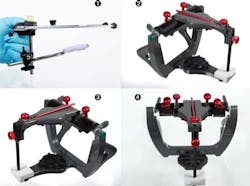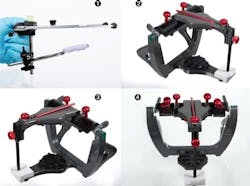Avoiding the frustrations with articulators and facebows
Joseph J. Massad, DDS
For more on this topic, go to www.dentaleconomics.com and search using the following key words: prosthodontics, prosthesis, enclosed container system, debris, Dr. Joe Massad.
Welcome back! The dental articulator remains a main component in producing prosthodontic restorations, despite the availability of virtual digital models and occlusion. It will be years before digital technology is perfected and adapted to the vast majority of practices. In addition, the expense of going digital is prohibitive for many offices at present.
When I visit dental labs or dental offices, I frequently see quite a variety of articulators floating around, some as old as 25 years and some that are new. When I inquire about this, both dentists and technicians give me a wide range of reasons for having multiple articulators. These reasons are sometimes very confusing and at other times have no technical rationale. Why is this? Because none of us are alike in our thinking. However, that is okay since we are allowed to use our own judgment in many cases – provided that we are following sound principles.
But here is the kicker. We may be wasting precious time, and our bottom line does not allow us the freedom to be wasteful, especially in these economic times.
I was also guilty of this many years ago when I owned over 50 articulators from three or four different manufacturers. But finally I decided that I must nail down the one or two articulators that would best fit my particular practice. Today, most articulator systems are calibrated, which allows the practitioner to send a case to his or her laboratory without also sending the articulator, as long as the technician has the same calibrated articulator system. This, of course, reduces the shipping cost. However, many times problems still arise when the dentist and the lab do not have the exact same articulator model with the same calibration.
In an attempt to reduce the number of articulators in my office, I first decided which facebow (Slidematic Facebow, Whip Mix Corp.) I favored over the others (Figure 1). I wanted one that was simple, accurate, and easy for my auxiliaries to use with predictability. The second question was: What type of records would I be taking? It is not necessary to buy a fully or partially adjustable articulator if you are recording only centric relation. A simple articulator system would suffice in this case. Figure 2 shows a Denar Mark 310, which has a built-in 15 degree protrusive side shift and a fixed angle of 25 degrees. This is a simpler, less expensive articulator.
If you are recording both protrusive and centric records, you need an articulator that has the ability to set these particular relationships (Figure 3). The Mark 320 articulator will allow this recording.
As seen in Figure 4, the Mark 330 allows the operator to take a progressive protrusive record and has an adjustable protrusive side shift and adjustable immediate side shift from 0 to 2 mm. This would be used for taking both protrusive and lateral records. All the Denar Mark 300 series are calibrated to one another.
By choosing the articulator that best fits my needs, I was able to decrease my inventory of articulators and reduce my expenses.
See you next month. I hope my pleasure in dentistry will also be yours ... Joe Massad.
Dr. Joseph Massad may be reached by phone at (918) 749-5600 or by e-mail at [email protected].
To see Dr. Massad's video tips, visit www.dentistryIQ.com
Past DE Issues

